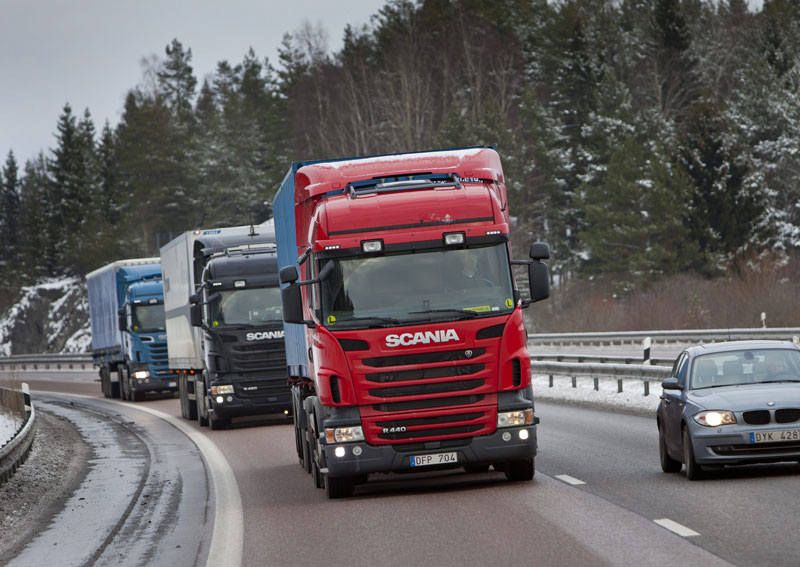by Björn Bjurling and Fehmi Ben Abdesslem, SICS Swedish ICT
Data-driven models derived with big data techniques can be used to improve and automate strategic and tactical decision making in heavy-duty road transportation.
Tactical decision making at carriers (e.g. assignment planning and vehicle allocation), relies largely on the skills and experience of individual dispatchers and decision makers. Decisions are typically supported by both commercial route planning software and physical models and statistics [1]. For larger carriers, substantial cost savings in terms of fuel consumption and driver scheduling may be achieved by improving decision support models and by considering larger data sets [2]. Recent developments in intelligent data analysis and computing technologies have made it possible to extract valuable information from big data, which in many domains has revolutionalized business models and increased the competitiveness of early adopters. Recently, there has also been intense activity in recording and collecting data in the automotive and transportation domains. The Data-driven Optimization for Intelligent and Efficient Transport (DOIT) project takes advantage of the advances in emerging big data technologies to analyse this data with the aim of improving decision making in the transportation industry.

The DOIT develops data-driven models for fuel consumption and travel time estimations with the aim of improving decision making in the transportation industry (Photo: Scania).
One of DOIT’s use-cases is concerned with improving assignment planning: to find the most cost-effective combination of vehicles, drivers, and routes for a given set of transport assignments (with specification of pick-up/delivery location and time, as well as information about the cargo). This can be modelled as a variant of the Vehicle Routing Problem (VRP). The main issues to address in this use case are: developing data-driven cost models and devising ways of using these new models together with existing commercial planning tools.
DOIT develops data-driven models for fuel consumption and travel time estimations as input to the VRP. These models exploit big datasets generated from vehicles, carriers, and manufacturers. Thousands of trucks generate data about their fuel consumption and travelling time, and these data are correlated with external attributes such as: time of day, route taken, specifications of the truck, freight weight, and even the weather and road conditions on that day.
With data-driven models, the solution to the VRP can thus take into account a larger set of attributes in estimating the corresponding costs, and thus gain in accuracy timeliness. There is, however, no obvious way to extract sufficiently certain and exhaustive assignment data as input to the VRP. Although basic assignments can be detected from collected data with some certainty, it is not possible to satisfactorily infer critical and realistic assignment information (e.g. earliest pick-up time or routing preferences) without making use of exogenous statistical models. DOIT will instead make use of data-driven cost models based on collected trip data to infer estimated costs for given assignment, where a trip is defined as the time between a vehicle starting and its first stop.
Link:
https://www.sics.se/projects/doit
References:
[1] D. Macias: “Estimation of Fuel Consumption for Real Time Implementation”, Master Thesis, KTH, Automatic Control, 2012.
[2] Winckler: “BMW Eco Navigation” BMW Group Technology Office, Presentation Notes, 2011.
Please contact:
Björn Bjurling,
SICS Swedish ICT











